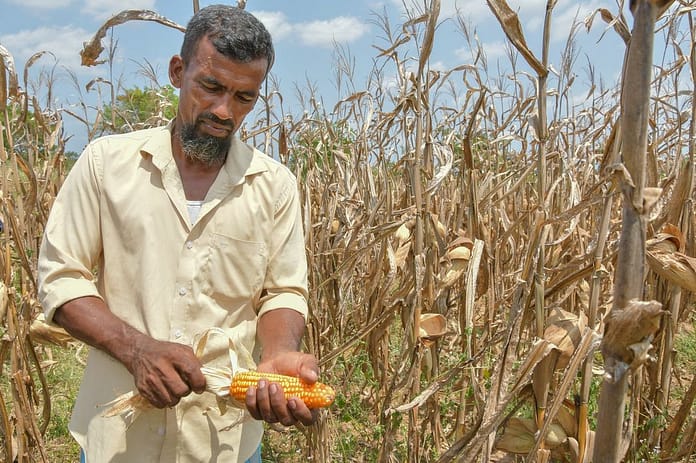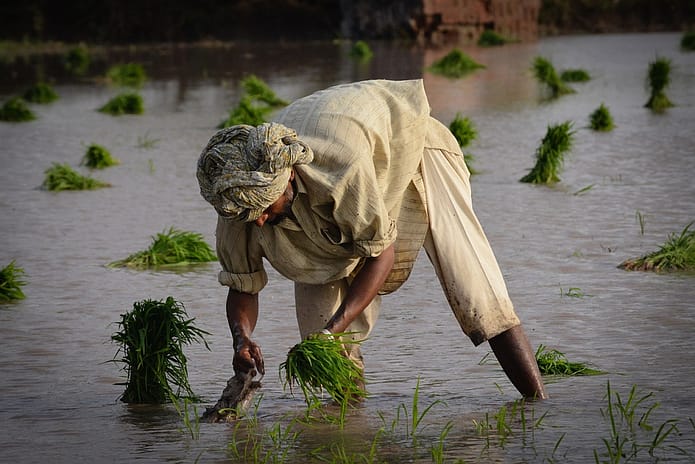How to manage agroecosystems for sustainable food security
Stockholm, 4 September. It is now widely thought that the Earth’s population will peak at 9 billion by 2050. Can we feed all these people? The answer is that we probably can. There are enough natural resources and technological advances in agriculture to deliver huge amounts of food for decades to come. The problem is that if we continue to farm as unsustainably as we are doing at the moment, there may not be much left of the planet’s ecosystems in forty years’ time.

And that is a big worry. Without natural processes like pollination, the water cycle and soil composting – often known as ecosystem services – our natural resource base degrades and agriculture may collapse. So if we are to feed 9 billion hungry mouths we need a re-think. We should not only improve food production from agriculture, livestock, aquaculture and fisheries, but also enhance the natural systems supporting that production. Increasing water scarcity, climate change, ecosystem degradation and demographic change will add complexity to this challenging task.

Now a new book published by CABI for the CGIAR Research Program on Water, Land and Ecosystems in partnership with the United Nations Environment Program (UNEP) addresses these issues head on. It suggests that we really can achieve food security through a more sustainable and environmentally sensitive agroecosystem approach to farming.
The book, Managing Water and Agroecosystems for Food Security, launched today at World Water Week in Stockholm, attempts to demonstrate the importance of ecosystem services and how water and nature can be managed for sustainable food production and wealth.
Balancing competing demands

“If we do not change the way we manage agriculture, we jeopardize long term food security,” says the book’s editor Eline Boelee, of Water Health, Netherlands and until recently a senior researcher at the International Water Management Institute (IWMI). “By considering our agricultural production systems as interlinked agroecosystems, we can manage water and other natural resources to enhance a whole range of ecosystem services beyond the provision of food. We can develop a mosaic of highly intensive food production, and nature. Forests and wetlands could be connected through, for example, hedgerows with trees and waterways as locally appropriate.”
In 11 chapters, the book’s authors look at the factors that might dictate how such decisions might be made. They investigate how we can move from a position where the Earth’s ecosystems are degraded, and 870 million people are undernourished, to sustainably providing food for Earth’s future population. First, they consider the drivers and challenges for food security, including the globalization of food markets and climate change. Then they look at how water underpins all ecosystem services and examine how agriculture depends upon, and influences, water in the context of ecosystems. These investigations set the scene for detailed chapters covering varying approaches to managing water within agroecosystems, in contexts ranging from wetlands to drylands.
The authors argue that decisions regarding management of agroecosystem services will typically involve balancing social, economic and environmental considerations, some of them among different services. For example, managing a landscape to maximize food production upstream will need to consider water purification for people downstream.
Understanding ecosystems
The authors urge decision makers to estimate the values of ecosystem services, to capture the costs and benefits and thus better understand these. For instance, in one of the first studies at this level, the UK government recently published a report estimating that the services provided by the natural capital of the country could benefit the UK economy by as much as 1.6 billion pounds a year. Honeybees and other pollinators, for example, contribute up to £440m to the economy every year, 13% of the country’s entire income from farming.
Water is a critical resource in these kinds of calculations. A more sustainable approach to water management involves increasing water productivity in agriculture, livestock management as well as aquaculture and agroforestry, separately as well as in combined multifunctional agroecosystems. “Water should no longer be allocated to ‘food production’ alone, but to ‘agroecosystems,” says Boelee. “Another option is to get downstream users to pay for environmental services. For instance, a hydropower company might pay upstream farmers to rehabilitate their watersheds to ensure a sustainable supply of water for dams and reservoirs. However, if the agroecosystem model is to be widely adopted, institutions need to support action at the local level, integrate natural resources management at river basin and landscape level, and integrate policies at the national level.
















